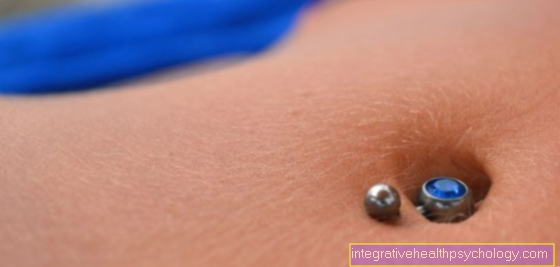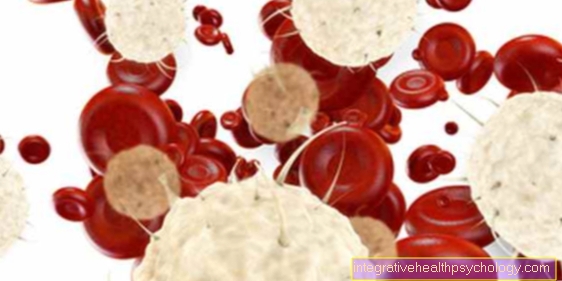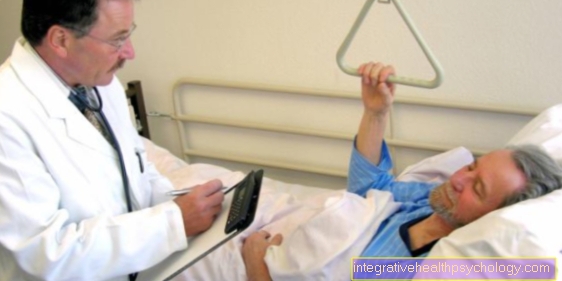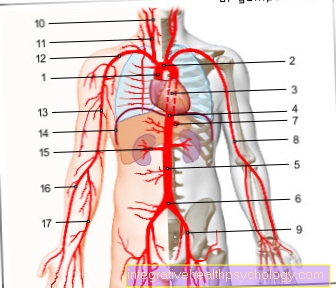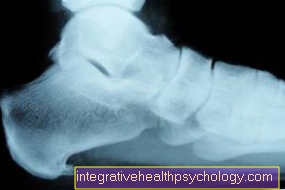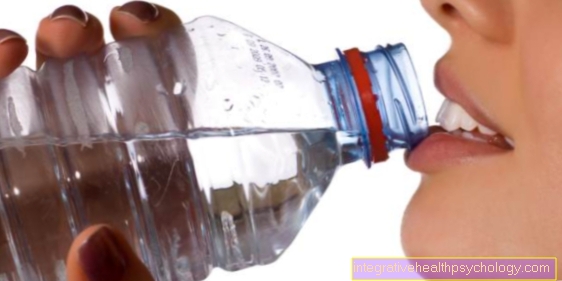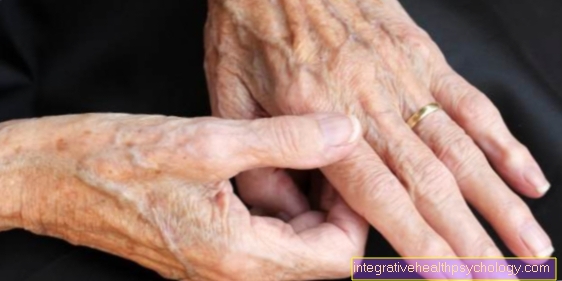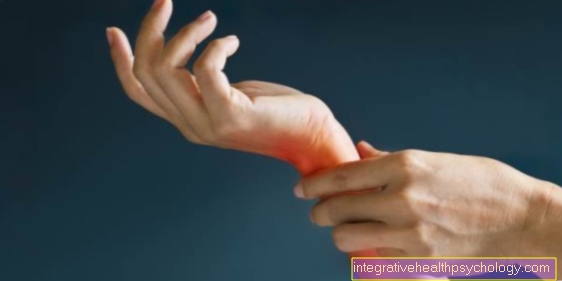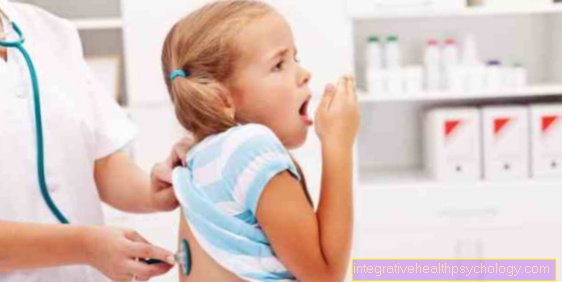Allergy emergency kit
Emergency kit - who is it for?
An emergency kit for allergy sufferers is useful and necessary if the person is prone to severe allergic reactions or anaphylaxis.
Anaphylaxis is the body's strongest reaction to a certain substance, an allergen. This leads to an overreaction of the immune system to a normally harmless substance, for example with the release of histamine. A wide variety of organs can be affected as part of this reaction. Symptoms often affect the skin, respiratory tract, gastrointestinal tract, and cardiovascular system. In severe reactions, several or all of the organ systems can be involved. In the worst case, anaphylaxis can become life-threatening within a short period of time and represents a medical emergency that must be treated immediately.

Common triggers
Food (most common triggers, especially in children): Nuts, peanuts, fish, eggs, milk, shellfish and soy are the most common triggers of allergic reactions. However, they can also be caused in individual cases by almost every protein-containing food. For some allergy sufferers, even the smallest amounts of the allergen are enough to trigger severe allergic reactions.
Read more on the topic: Food allergy
Insect venoms (especially in adults): Wasps, bees, bumblebees or hornets transmit toxins to humans when they sting. These poisons are potential allergens that cause an allergic reaction in some people.
You might also be interested in: Hornet stings - that's how dangerous they are
Medicines: Antibiotics, pain relievers, anesthetics and X-ray contrast media are the most common triggers for drug-induced allergic reactions.
Other: Natural latex or other animal and plant allergens can trigger a reaction. In addition, the allergic reaction can be intensified by exercise.
Read about this too Allergic reaction
How is a severe allergic reaction expressed?
Symptoms that seem harmless at first can appear very quickly and suddenly, within minutes to hours of contact with the allergen. However, these symptoms, which seem harmless at first, can progress quickly.
First signs: Itching occurs on the palms of the hands and soles of the feet, sometimes also on the genitals, sneezing attacks, metallic taste in the mouth, in the mouth and throat, tingling, as well as restlessness, heat sensation or flushing and reddening of large areas of the skin.
Mild symptoms: swelling of the lips, eyes and / or face, rash, headache, nausea, cramps, cough and shortness of breath
Severe symptoms: sharp drop in blood pressure, unconsciousness, shortness of breath, cardiovascular and / or respiratory arrest
What to do in an emergency
When treating allergic reactions / anaphylaxis, it is important to react and treat immediately; the following measures should be taken as soon as possible if a severe allergic reaction or anaphylaxis is suspected:
-
Stop the allergen supply or remove the person affected from the allergen environment as soon as possible
-
Use of the emergency kit (see below)
-
Notify ambulance (112)
- First aid measures, depending on the symptoms (e.g. lying down if you have circulatory problems, lying on your side if you are unconscious)
Also read our topic: Allergy to bee venom
The emergency kit
The emergency kit for allergy sufferers consists of three drugs that are available individually or are prescribed by a doctor:
-
Adrenaline auto-injector
-
Antihistamine (drops, juice, or tablets)
-
Cortisone (juice, tablets, or suppositories)
Adrenaline: The effect of adrenaline sets in very quickly, it normalizes the heart function, increases the blood pressure and thus leads to a stabilization of the circulation. In addition, it has a relaxing effect on the muscles of the bronchi, making breathing easier.
Antihistamine: The antihistamine is primarily used to combat the allergic reaction.
Cortisone: Cortisone may counteract reactions that occur later.
If asthma or breathlessness in allergic reactions is known, those affected should also carry an asthma spray with them or add it to the emergency kit. The asthma spray also improves breathing by relaxing the respiratory muscles and expanding the airways.
What should an emergency bee and wasp sting kit contain?
An emergency kit for a strong allergy, for example an allergy to bee or wasp stings, should consist of components that can be used quickly and easily in the event of a strong and sometimes life-threatening allergic reaction ("anaphylactic shock"). These usually include at least an adrenaline pre-filled syringe ("Epipen"), a so-called antihistamine and a drug that contains cortisone. The pre-filled adrenaline syringe should be easy to use.
It may therefore make sense to have practiced the application beforehand with a simulation device. The active ingredient group of antihistamines are regularly used to treat even minor allergic reactions, but in correspondingly higher doses they are also effective in anaphylactic shock. Cortisone should be given in high doses to weaken the immune response that is responsible for the allergic shock. With the antihistamine as well as with the cortion preparation, care should be taken that it can be taken without water - that is, it can be administered in drops, for example.
Also read the article on the topic: Wasp sting first aid and emergency measures
Use of the emergency kit
The Use of the emergency kit is simple and feasible for everyone. However, they should work best with yours Family doctor or Allergists once the operation of the Adrenaline auto-injector Explain using a sample device and have precise instructions for taking the other drugs documented in the form of a Anaphylaxis Passes.
Reduce the risk of anaphylaxis
Important principle: Recognize - counteract - remember
Recognize: The most effective protection against severe allergic reactions is the exact knowledge of what triggers them and what causes them first symptoms are. In addition, factors that have a weakening or intensifying influence on the reaction are of decisive importance.
Counteract: In case of an allergic reaction is quick action required to prevent serious complications. Important here:
The emergency set should always be kept close at hand; in the case of children, parents should carry the set with them accordingly
The environment should be informed about the allergy: family, friends, work colleagues, school, kindergarten.
This includes: what the allergy is, what the first symptoms and signs of an allergic reaction are, how others can help in an emergency
Carry an anaphylaxis pass with you (available from your family doctor or the German Allergy and Asthma Association)
Regular control of the medication or its expiration dates in the emergency kit
Practice using the emergency kit (especially the adrenaline auto-injector)
Remembering: Once an allergic reaction / anaphylaxis has been overcome, every little detail should be remembered about how the reaction came about in order to learn from it similar situations in the future to avoid.
Food allergy sufferers should also seek nutritional advice.
Is the emergency kit available without a prescription?
In order to be able to get an emergency kit for an allergic emergency in the pharmacy as a severe allergy sufferer, you always need a prescription from the attending physician. The drugs in these sets are not available without a prescription. This is due to the fact that the active ingredients contained are very high doses and should therefore only be given to people who actually need them and know about their effect. In addition, allergy emergency kits also contain a ready-made syringe to inject adrenaline immediately in an emergency. Since needles hold a special risk and injury potential, the strictly controlled delivery also applies here.
What does an emergency kit cost?
The emergency kit usually has to be put together from the drugs and preparations mentioned. The costs therefore also depend on the strength of the dosage, which in turn should be adapted to the strength of the allergy. The price value of an emergency kit can therefore be € 30-50. Most of the time, these costs are borne by the person concerned, but it is worth checking with the health insurance company whether they will at least partially cover the costs.
Can I take an emergency kit with me in hand luggage?
If you travel by plane as an allergy sufferer, the emergency kit should understandably be stowed within reach in hand luggage - because this is the only way it can fulfill its actual purpose in an emergency. Due to the strict regulations on hand luggage when traveling by air, the question now arises whether the allergy emergency kit will not be withdrawn from circulation at the baggage check. Basically, all essential medication is allowed to be taken on board.
It is best to pack them clearly in a transparent bag. Ideally, however, a document should be available that credibly certifies that it is necessary to take it with you. This can be, for example, an allergy passport or a doctor's certificate. Such a certificate should be available, especially for syringes and needles, such as those required for an Epipen. Liquids that containers up to 100 milliliters are fine. In total, a maximum of one liter may be taken on board in hand luggage, but this should not be exceeded with most emergency kits.


